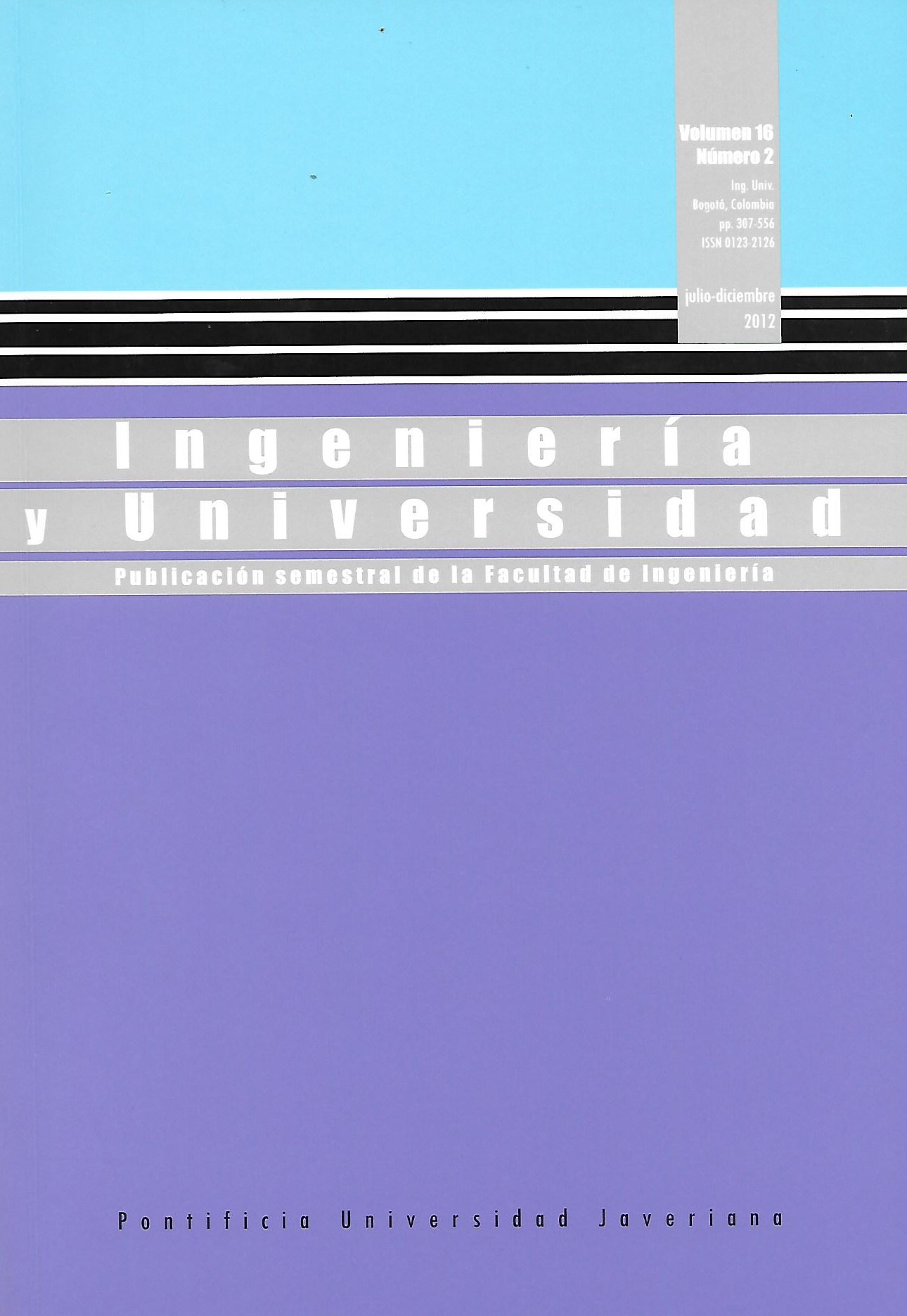Abstract
En este artículo se describe una alternativa numérica para solucionar sistemas de ecuaciones no lineales con raíces reales y/o complejas. Para ello se convirtió el problema de solución directa de tales sistemas en un problema de optimización, y se resolvió utilizando el método de enjambre de partículas apropiadamente modificado para tal tarea. A título demostrativo se incluyen algunos resultados con sistemas de dos, cinco y diez ecuaciones, resueltos en un computador convencional y en un arreglo de cuatro nodos. Se concluyó que la estrategia es válida para solucionar este tipo de sistemas. Por otra parte, no se detectó una mejora en los tiempos de computación cuando se utilizó el cluster.
BIANCHINI, M.; FANELLI, S. and GORI, M. Optimal algorithms for well-conditioned nonlinear systems of equations. IEEE Trans On Computers. 2001, vol. 50, no. 7, pp. 689-698.
BRITS, R.; ENEGELBRECHT, A. and VAN DEN BERGH, F. Solving systems of unconstrained equations using particle swarm optimization. Pretoria, South Africa: Department of Computer Science, University of Pretoria, 2002.
CLERC, M. Particle swarm optimization. 1st Edition. ISTE, 2006. Chap. 3
CUI, Z. and CAI, X. Using social cognitive optimization algorithm to solve nonlinear equations. Shanxi, China, 2010. Proc. 9th IEEE Int. Conf. On Cognitive Informatics, June 2005. pp. 199-203.
FLOUDAS, C. Deterministic global optimization. Kluwer Academic Publisher, 1999. Chap. 12.
GENG H. T.; SUN Y. J.; SONG Q. X. et al. Research of ranking method in evolution strategy for solving nonlinear system of equations. The 1st International Conference on Information Science and Engineering (ICISE2009), IEEE Computer Society, pp. 348-351.
GÓMEZ, L. Propuesta de demostración del teorema sobre la relación entre sistemas de ecuaciones y el problema de optimización (Comunicación interna UIS. Nov 11, 2010).
GROSAN, C. and ABRAHAM, A. A new approach for solving nonlinear equations systems. IEEE Trans. On Systems and Cybernetics-Part A: Systems and Humans. 2008, vol. 38, no. 3, pp. 698-713.
GROSAN, C. and ABRAHAM, A. Multiple solutions for a system of nonlinear equations. International J. of Innovative Computing. Information and Control, ICIC. 2008, pp. 76-82.
HATANAKA, T; UOSAKI, K. and KOGA, M. Evolutionary computation approach to block oriented nonlinear model. Control Conference. 2004. 5th Asian, pp. 90-96.
HUI, W. and ZHAO, Z. A neural network algorithm for solving systems of nonlinear equations. Changsha, Hunan, China: College of Electrical & Information Engineering, University of Science & Technology, 2008.
LUO, Y. Z.; TANG, G. J. and ZHOU, L. N. Hybrid approach for solving systems of nonlinear equations using chaos optimization and quasi-Newton method. Applied Soft Computing. 2008, 8, pp. 1068-1073.
ORTEGA, J. and RHEINBOLDT, W. Iterative solution of nonlinear equations in several variables. New York: Academic Press, 1970.
OUYANG, A.; ZHOU, Y. and LUO, Q. Hybrid particle swarm optimization algorithm for solving systems of nonlinear equations. Granular Computing, 2009, GRC '09. IEEE International Conference on, pp.46-465.
PARSOPOULOS, K. and VRHATIS, M. Particle swarm optimization and intelligence: advances and applications. Ed. Information Science Reference, 2010, Chaps 1-4.
RAO, S. Engineering optimization, theory and practice. 4th edition. Ed. John Wiley & Sons, 2009. Chap. 2-13.
TSOULOS, I. and STAVRAKOUDIS, A. On locating all roots of systems of nonlinear equations inside bounded domain using global optimization methods. Nonlinear Analysis: Real World Applications. 2010, vol. 11, no. 4, pp 2465-2471.
YANG, B.; ZHANG, Z. and SUN Z. Computing nonlinear lst estimator based on a random differential evolution strategy. Tsinghua Science and Technology. 2008, vol. 13, no.1, pp.1007-0214.
This journal is registered under a Creative Commons Attribution 4.0 International Public License. Thus, this work may be reproduced, distributed, and publicly shared in digital format, as long as the names of the authors and Pontificia Universidad Javeriana are acknowledged. Others are allowed to quote, adapt, transform, auto-archive, republish, and create based on this material, for any purpose (even commercial ones), provided the authorship is duly acknowledged, a link to the original work is provided, and it is specified if changes have been made. Pontificia Universidad Javeriana does not hold the rights of published works and the authors are solely responsible for the contents of their works; they keep the moral, intellectual, privacy, and publicity rights.
Approving the intervention of the work (review, copy-editing, translation, layout) and the following outreach, are granted through an use license and not through an assignment of rights. This means the journal and Pontificia Universidad Javeriana cannot be held responsible for any ethical malpractice by the authors. As a consequence of the protection granted by the use license, the journal is not required to publish recantations or modify information already published, unless the errata stems from the editorial management process. Publishing contents in this journal does not generate royalties for contributors.


